Design Visionaries: Ray + Charles Eames
Ray and Charles Eames are two of the most celebrated figures in the world of architecture and design, and personal favorites of the interior design team at Niche. Together, they made a significant contribution to the field of California architecture and design, helping to shape the look and feel of the state in the 20th century. In this post, we’ll explore their influence and legacy in California architecture and furniture design.
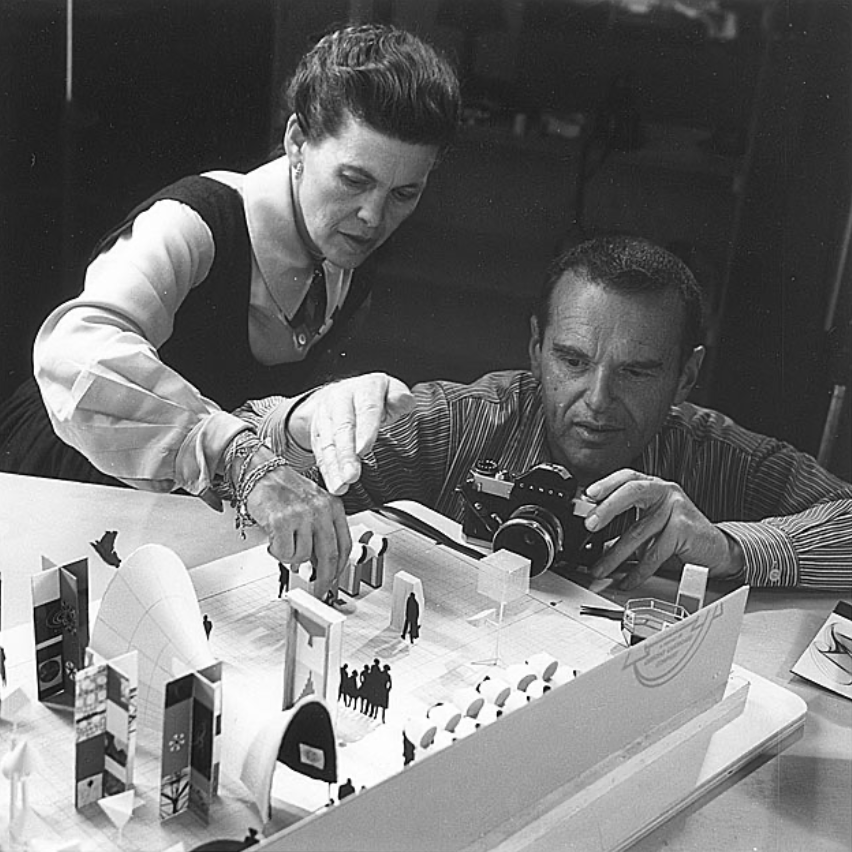
Early Years
Ray and Charles Eames met in 1940 at the Cranbrook Academy of Art in Michigan, where they were both studying design. They quickly formed a close partnership, both personally and professionally, and they would go on to collaborate on some of the most iconic furniture designs of the 20th century. Throughout their career, the Eameses also collaborated with a number of other designers and artists, including Eero Saarinen, who was a fellow student at Cranbrook and would go on to become a leading figure in modern architecture and design. The Eameses also worked with Alexander Girard, a textile designer and architect who was known for his use of bold colors and playful patterns. Other notable collaborators included George Nelson, a designer and writer who was instrumental in bringing modern design to the United States, and Isamu Noguchi, a sculptor and designer who created a number of iconic pieces of furniture and lighting.
Together, the Eameses and their collaborators helped to shape the course of modern design, creating a legacy that continues to inspire and influence designers today. They married in 1941 and moved to California in 1945, settling in Venice, a bohemian beach community in Los Angeles. In California, the Eameses found a community of artists, designers, and architects who were exploring new ideas and approaches to design. They quickly became part of this community and began to develop their own unique style and aesthetic.
Eames Case Study House
One of the Eameses’ most significant contributions to California architecture was the design of their own home, known as the Eames House. Completed in 1949, the house is a masterpiece of modernist design, with its clean lines, use of natural materials, and integration with the surrounding landscape. The Eameses designed the house as a case study in modern living, using prefabricated materials and industrial techniques to create a flexible, open plan that could adapt to the changing needs of a growing family. The house is now a National Historic Landmark and serves as a museum and study center for the Eameses’ work.
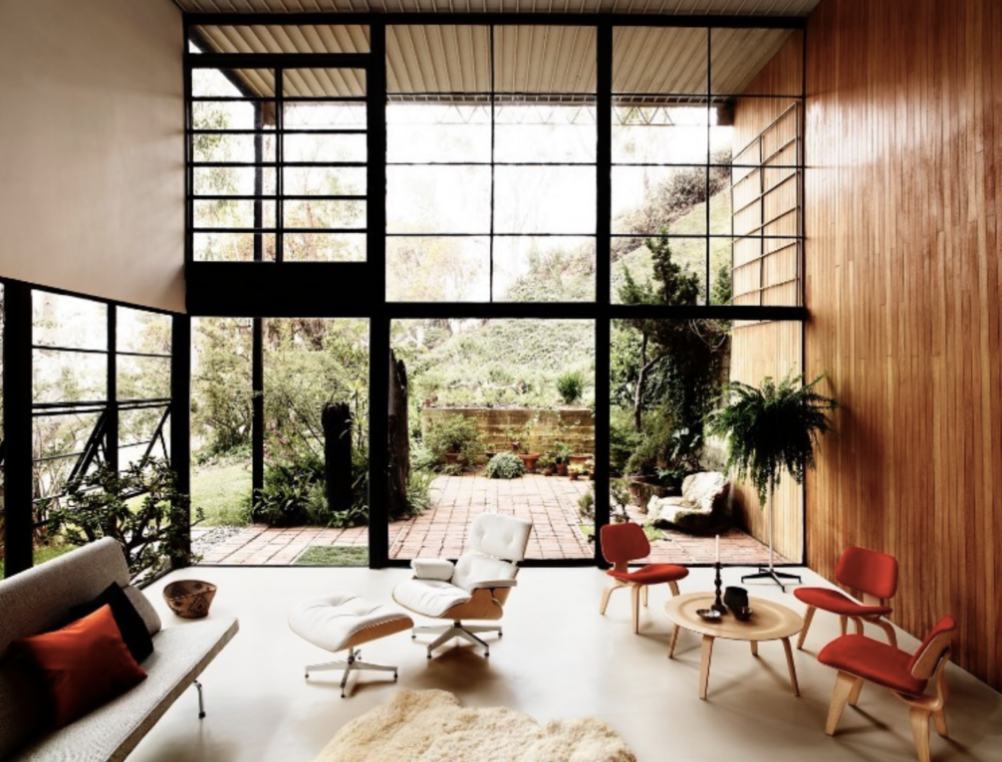
The Case Study House program was an ambitious project launched in the 1940s by John Entenza, the editor of Arts and Architecture magazine. The goal of the program was to showcase innovative and affordable housing designs that could be built on a large scale to meet the growing demand for new homes in post-war America. Charles and Ray Eames were among the architects and designers who participated in the program, creating the iconic Case Study House No. 8, also known as the Eames House. The Eames House is located in Pacific Palisades, a residential neighborhood in Los Angeles, California. The house sits on a bluff overlooking the Pacific Ocean, surrounded by a lush landscape of trees and gardens. The location of the house was carefully chosen by the Eameses, who were inspired by the natural beauty of the site and sought to create a design that would integrate seamlessly with the surrounding landscape.
The Eames House is a masterpiece of modernist design, characterized by its clean lines, use of natural materials, and integration with the surrounding landscape. The house is made up of two rectangular volumes, one for living and one for working, which are separated by a courtyard. The living area of the house features an open plan with floor-to-ceiling windows that provide stunning views of the surrounding landscape. The furniture in the living area, including the iconic Eames Lounge Chair and Ottoman, was designed by Ray and Charles Eames and is still in production today.
The working area of the house features a studio space that was used by the Eameses for their design work, as well as a library and a mezzanine level that provided additional living space. One of the key innovations of the Eames House was its use of prefabricated materials and industrial techniques to create a flexible, adaptable design. The house was constructed using a modular system of steel and concrete panels, which were fabricated off-site and then assembled on site. This approach allowed the Eameses to create a design that was both affordable and flexible, and that could adapt to the changing needs of a growing family.
The Eames House is now a National Historic Landmark and serves as a museum and study center for the Eameses’ work. The house is open to the public and provides a unique opportunity to experience the Eameses’ innovative approach to architecture and design. The Eameses’ work on the Case Study House program, and in particular the design of the Eames House, had a profound influence on the field of architecture and design. Their emphasis on simplicity, functionality, and beauty continues to be a guiding principle for many designers, and their work has been celebrated for its ability to bridge the gap between high design and mass production.
Furniture Design
In addition to their work in architecture, Ray and Charles Eames also made significant contributions to the field of furniture design. They created a number of iconic pieces that are still in production today, including the Eames Lounge Chair and Ottoman, the Eames Molded Plywood Chair, and the Eames Wire Chair. You can spot a number of Eames pieces in our San Francisco Bay Area interior design projects!
Their furniture designs were characterized by their use of new materials and techniques, such as molded plywood and welded wire, and their commitment to creating furniture that was both functional and beautiful. Their designs were often modular and adaptable, making them ideal for use in a variety of settings, from homes to offices to public spaces.
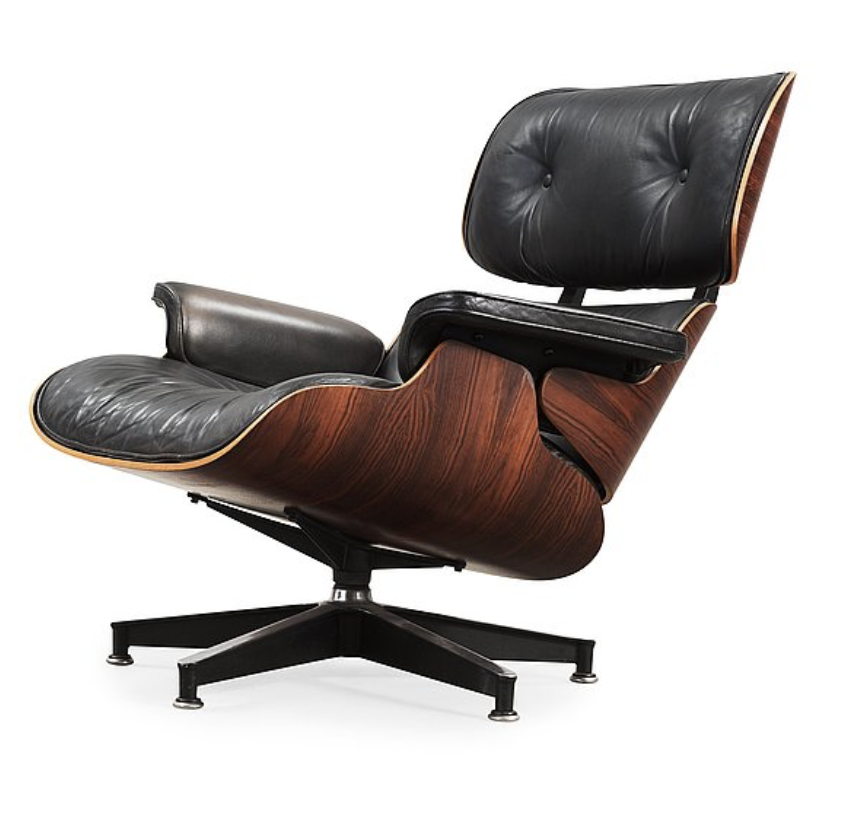
Eames Lounge Chair and Ottoman
The Eames Lounge Chair and Ottoman is perhaps the most famous design by Charles and Ray Eames. First introduced in 1956, this iconic piece is instantly recognizable for its sleek, modern lines and luxurious leather upholstery. It’s a classic example of mid-century modern design, and its timeless elegance has made it a staple in homes and offices around the world.
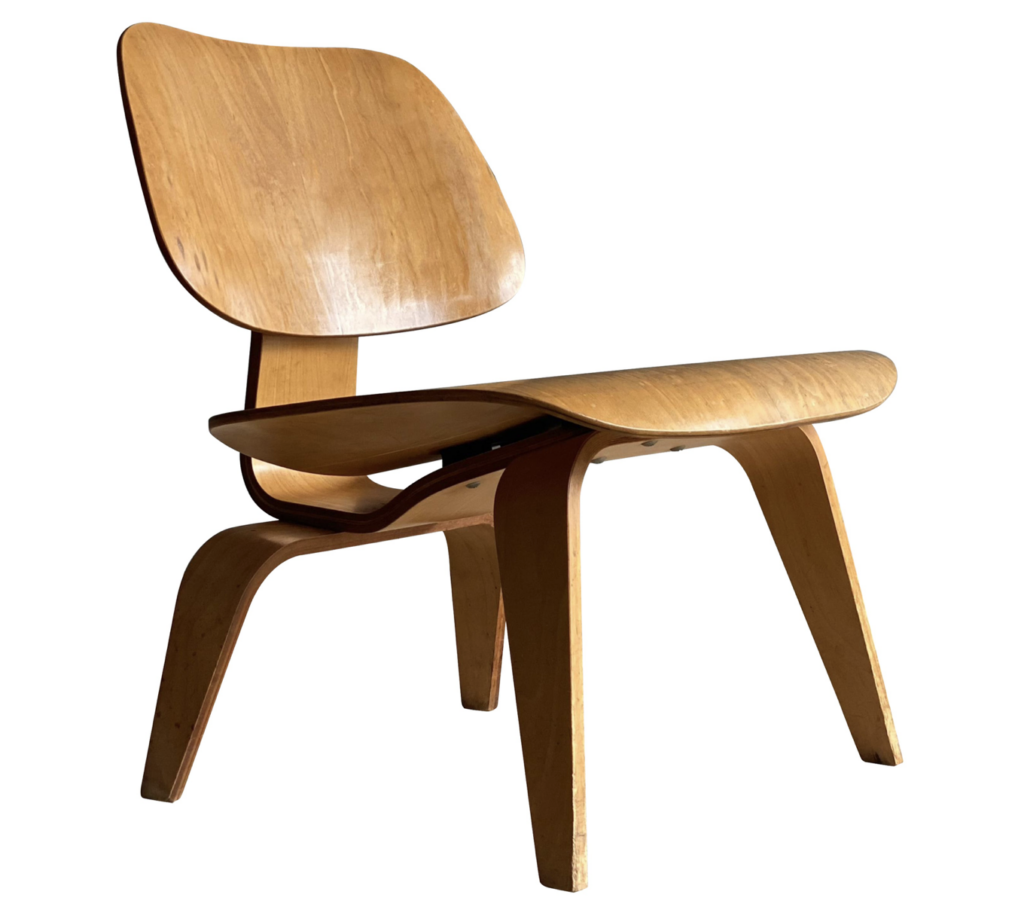
Eames Molded Plywood Chair
Another iconic design by the Eameses is the Molded Plywood Chair, which was first introduced in 1946. The chair was created by bending and molding thin sheets of wood, resulting in a unique and organic shape that was unlike anything else on the market at the time. The Molded Plywood Chair was revolutionary in its use of materials and manufacturing techniques, and it remains a popular choice for modern interiors today.
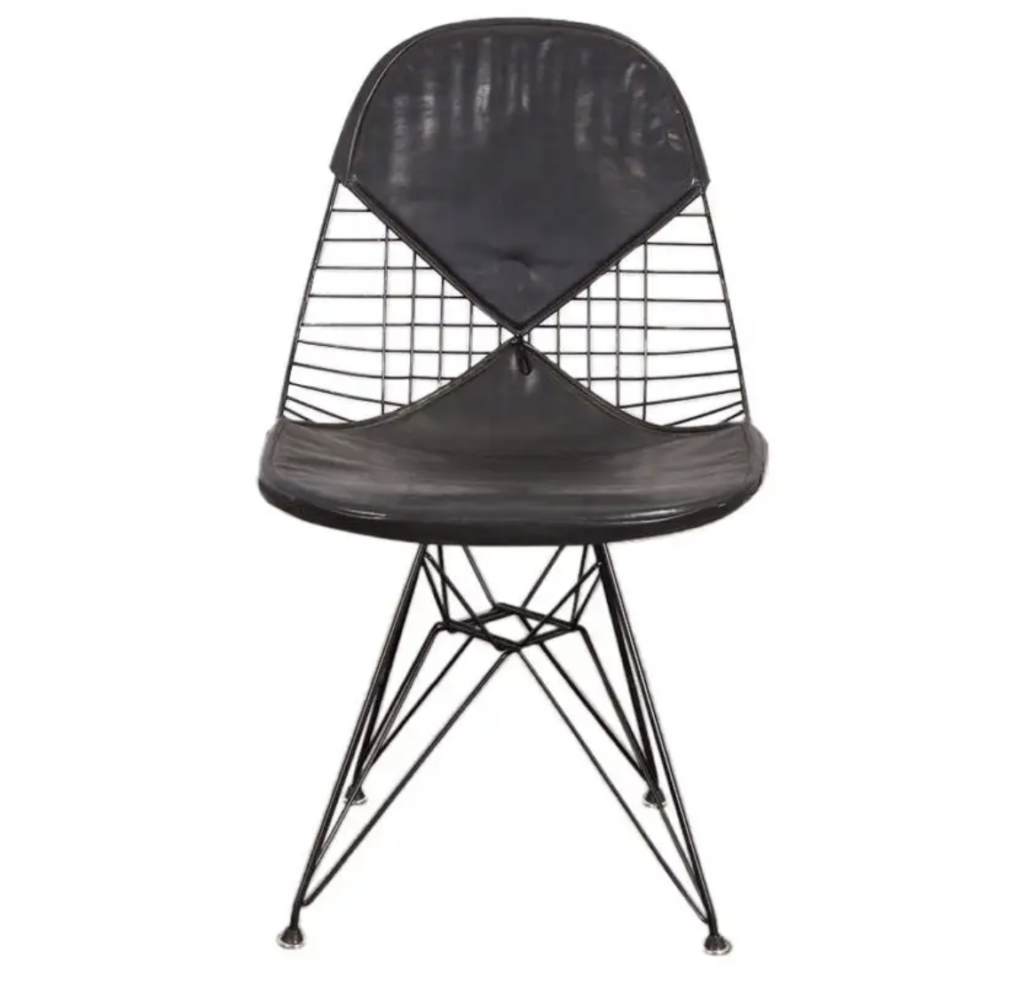
Eames Wire Chair
The Eames Wire Chair was first introduced in 1951 and is another example of the Eameses’ innovative use of materials. The chair is made from a simple wire frame that is both lightweight and strong, with a minimalistic design that is both stylish and functional. The Wire Chair was also available with a variety of different upholstery options, making it a versatile choice for any space. Fun fact: Principal Designer Jennifer has an original set of these with the “bikini covers” at her Wine Country vacation home and considers them a favorite in her mid-century modern collection!
Eames Molded Fiberglass Chair
The Eames Molded Fiberglass Chair was first introduced in 1950, and it quickly became a classic example of mid-century modern design. The chair was created using a process called fiberglass reinforced plastic molding, which allowed for a strong, lightweight shell that could be molded into a variety of different shapes and sizes. The chair was originally designed as an affordable and durable option for everyday use, and it quickly became a popular choice for homes, offices, and public spaces. Over time, the chair evolved to include a variety of different base options, as well as a range of different upholstery options, including leather, fabric, and vinyl. Despite the introduction of newer materials and manufacturing techniques, the Eames Molded Fiberglass Chair remains a beloved classic that continues to inspire designers and furniture lovers today.
Eames Storage Unit
The Eames Storage Unit was designed in 1950 and was originally intended for use in the Eameses’ own home. The unit features a modular design, with a variety of different compartments and drawers that can be arranged in a number of different configurations. The Storage Unit was one of the first examples of modular furniture, and its flexible design has made it a popular choice for modern homes and offices.
Legacy
Charles and Ray Eames’ contributions to California architecture and design have had a lasting impact on the field, influencing generations of designers and architects. Their emphasis on simplicity, functionality, and beauty continues to be a guiding principle for many designers, and their work has been celebrated for its ability to bridge the gap between high design and mass production.
Today, the Eameses’ legacy is celebrated in a number of ways, including the ongoing production of their furniture designs and the preservation of their home as a museum and study center. Their work continues to inspire and influence designers around the world, and their impact on California architecture and design will be felt for generations to come. Interested in learning more about modernist design legends from the 20th century? Take a look at past Design Visionary posts on Charlotte Perriand and Mies van Der Rohe.
